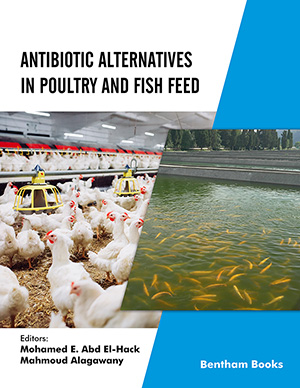Abstract
Background: Sugarcane silage has been increasing as a feed in the tropics by dairy farmers. However, sugarcane normally had high yeast population that leads to intense alcoholic fermentation and excessive Dry-Matter (DM) loss during ensilage and after air exposure, as well. There are several patents that have recently shown the benefits of applying Lactobacillus buchneri in forage preservation.
Objective: This study aimed to investigate the changes in pH, DM, Water-Soluble Carbohydrates (WSC) and fermentation end product concentrations that occur in sugarcane silage with or without inoculation with L. buchneri after 45 days of ensiling.
Methods: Sugarcane plants were harvested with approximately 16 months of growth and chopped at 2 cm. Four strains of wild L. buchneri (56.1, 56.4, 56.9 and 56.26) and the commercial inoculant “Lalsil Cana” were evaluated. For all treatments, the theoretical application rate was 1.0 × 106 colony- forming units (cfu) per g of fresh weight. Data from the silo openings were analysed as a completely randomized design, with four replicates per treatment (inoculants).
Results: The treatment with L. buchneri affected the DM content, pH, Lactic Acid Bacteria (LAB) population, DM recovery, and concentrations of WSC, lactic acid, acetic acid and ethanol of sugarcane silage after 45 days of ensiling. Yeasts and molds populations and the concentrations of propionic and butyric acids were not affected by the treatments.
Conclusion: Lactobacillus buchneri 56.1 and 56.4 are considered the most suitable strains for improving the fermentation of sugarcane silage and thus are potential inoculants for silage production. At present, we are preparing the patent application.
Keywords: Dry matter recovery, lactic acid bacteria, organic acids, Saccharum officinarum L., water-soluble carbohydrates, yeast and mold.
[http://dx.doi.org/10.3168/jds.2013-7181] [PMID: 24393176]
[http://dx.doi.org/10.1590/S1516-35982011001100006]
[http://dx.doi.org/10.3168/jds.2017-13836] [PMID: 29685279]
[http://dx.doi.org/10.4067/S0718-58392015000400005]
[http://dx.doi.org/10.1111/gfs.12273]
[http://dx.doi.org/10.1590/S1516-35982014000100002]
[http://dx.doi.org/10.3168/jds.2017-13839] [PMID: 29685273]
[http://dx.doi.org/10.3168/jds.2017-13837] [PMID: 29685272]
[http://dx.doi.org/10.3168/jds.S0022-0302(06)72444-4] [PMID: 16960077]
[http://dx.doi.org/10.1111/gfs.12360]
[http://dx.doi.org/10.1590/S1516-35982007001000013]
[http://dx.doi.org/10.1590/S1516-35982006000100005]
[http://dx.doi.org/10.4025/actascianimsci.v30i3.1564]
[http://dx.doi.org/10.3168/jds.2013-6987] [PMID: 24359831]
[http://dx.doi.org/10.1111/gfs.12117]
[http://dx.doi.org/10.1007/978-94-011-4020-1]
[http://dx.doi.org/10.1128/AEM.69.1.562-567.2003] [PMID: 12514042]
[http://dx.doi.org/10.1007/s10295-007-0267-8] [PMID: 17940817]
[http://dx.doi.org/10.3168/jds.2017-12876] [PMID: 29274960]
[http://dx.doi.org/10.1590/S0103-90162008000600004]
[http://dx.doi.org/10.1111/j.1365-2494.2009.00703.x]
[http://dx.doi.org/10.3168/jds.S0022-0302(02)74222-7] [PMID: 12146485]
[http://dx.doi.org/10.1046/j.1365-2672.1999.00856.x] [PMID: 10583687]
 41
41 1
1



















